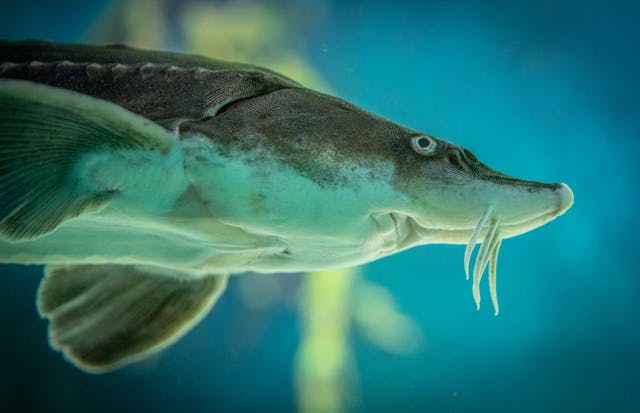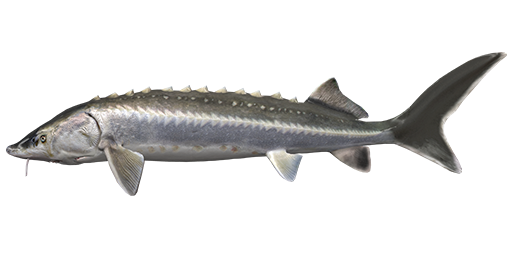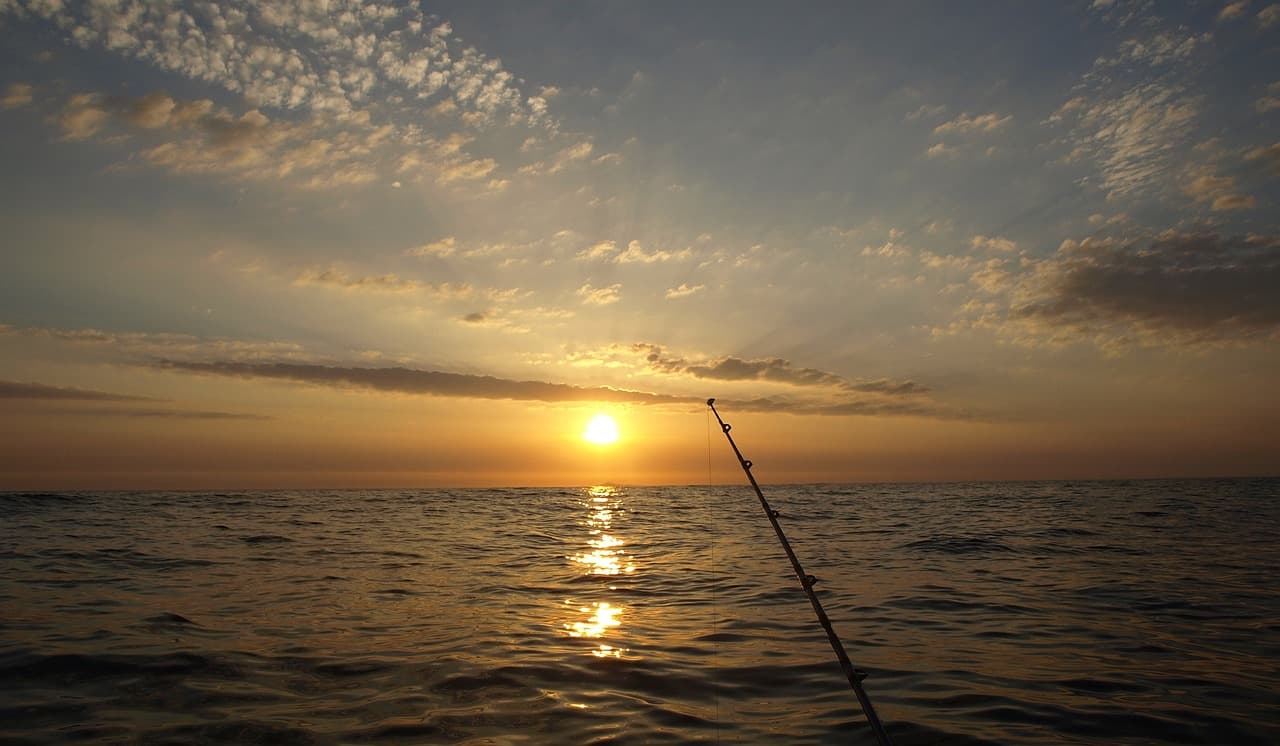At first glance, the waterways of the world might seem like just a collection of shimmering bodies of water abuzz with the fascinating expanse of marine life. But every so often, there surfaces—both literally and figuratively—a fish so regal, so enigmatic, that it demands a closer look. The sturgeon is a peculiar case, a creature of both prehistoric and culinary significance. This fish, most revered, it seems, for the salty treasures it bears—caviar—represents not just a luxury palate, but a storied history of commerce, conservation, and culture. In this detailed exploration of sturgeons, we’ll dip beneath the surface to uncover the myriad species that adorn the sturgeon family tree.
A Deep-Dive into Sturgeon Diversity
The sturgeon family, Acipenseridae, encompasses over two dozen species of this iconic fish, spanning the globe from North America to the Caspian Sea. With their elongated bodies, scaled armor, and long whisker-like barbels, these species might share a similar profile, but their features and habitats are as diverse as the regions they inhabit.
The Beluga Sturgeon (Huso huso)
The Goliath of the Sturgeon
Arguably the most famed due to the most sought-after caviar, Beluga Sturgeon is the largest of the sturgeon species and is known for its colossal size, living up to 100 years or more and weighing as much as 1,500 kg. Found primarily in the Caspian and Black Seas, population numbers have dwindled, making them one of the most regulated and protected species.
The Russian Sturgeon (Acipenser gueldenstaedtii)
The Classic Caviar Producer
Closely related to the Beluga Sturgeon, the Russian Sturgeon is also a significant caviar producer. It has a more modest size compared to its cousin but is still a giant of its kind, reaching up to 220 kg. Its range also includes the Caspian Sea and its basin.
The Sterlet (Acipenser ruthenus)
The Royal Resident of Rivers

The Sterlet is one of the smaller sturgeon species, averaging around a meter in length, and is native to the basins of the Black, Azov, and Caspian Seas. It was once considered a royal food and has historical culinary significance in European courts.
The Atlantic Sturgeon (Acipenser oxyrinchus)
A North American Icon
Roughly comparable in size to its European counterparts, the Atlantic Sturgeon is found along the Atlantic Coast of North America, including the Hudson River. This sturgeon has had a complicated history with overfishing and has seen populations decline, leading to conservation measures.
The Lake Sturgeon (Acipenser fulvescens)
The Resilient Freshwater Giant
Found in the freshwater lakes and rivers of North America, the Lake Sturgeon is a significant cultural symbol for many indigenous peoples. This species has a reputation for being long-lived, with some specimens reaching over a century.
Conservation Challenges and Efforts
The allure of sturgeon and their valuable roe, serving as the foundation of the caviar industry, has led to intense fishing pressure and habitat degradation. The situation is further complicated by factors such as dam construction, pollution, and climate change, which can impact the fish at various life stages, from spawning to maturity. Conservation organizations and fisheries worldwide are working diligently to ensure the survival and recovery of sturgeon populations.
The Sturgeon Lifecycle and Conservation Implications
Sturgeons are anadromous, meaning they spawn in freshwater but spend most of their lives in the sea. This unique life cycle makes them particularly vulnerable to habitat alteration and overfishing. Efforts to conserve sturgeon populations often involve the restoration of spawning grounds, controlled fishing quotas, and the regulation of the caviar trade.
International Agreements and Initiatives
Organizations such as the Convention on International Trade in Endangered Species of Wild Fauna and Flora (CITES) and the World Wildlife Fund (WWF) have played crucial roles in promoting international cooperation and conservation efforts. By setting guidelines for sustainable caviar production and trade, these entities help safeguard sturgeon populations.
Aquaculture as a Conservation Tool
The practice of sturgeon aquaculture has gained traction as a means of preserving wild stocks. By raising sturgeon in controlled environments, aquaculture facilities can produce caviar without impacting wild populations. Furthermore, some aquaculture operations are involved in restocking initiatives, releasing grown sturgeons into their natural habitats to bolster wild populations.
The Tantalizing World of Caviar
For centuries, caviar has been synonymous with luxury and indulgence. The finest caviar, traditionally derived from sturgeon roe, boasts a delicate texture and a rich, nuanced flavor, setting a standard for high-end cuisine. This section outlines the caviar-producing capacities of different sturgeon species, highlighting the nuances that make each type of caviar a distinct delicacy.
Beluga Caviar

The largest sturgeon species produce the largest and most prized caviar. Beluga caviar is distinguished by its large, black pearls and its smooth, buttery taste. Sourced from the critically endangered Beluga sturgeon, genuine Beluga caviar is rare and highly regulated.
Osetra Caviar
Considered a middle ground between Beluga and Sevruga caviar, Osetra caviar comes from sturgeons such as the Russian and Persian sturgeons. It is known for its firm texture, slightly nutty flavor, and a range of colors from dark brown to light gold.
Sevruga Caviar
Sevruga caviar, sourced from the Sevruga sturgeon, is the smallest-grained and most abundant of the Caspian caviars. It is characterized by its milder, smoother taste and ranges in color from dark grey to black.
Caviar Substitutes and Alternatives
In response to declining sturgeon populations and strict regulations, the market has seen the rise of caviar substitutes, such as fish roe from sustainable sources, that offer similar taste and texture profiles. Alternatives like salmon or trout roe, known as “red caviar,” have become popular choices for those seeking a sustainable option.
Culinary Significance and Beyond
The legacy of sturgeon extends beyond just caviar. Throughout history, this fish has held a significant place in diverse culinary traditions. From soups to smoked fillets, sturgeon have been featured in a variety of delectable dishes. With a taste and texture that marries well with different cooking techniques and flavors, sturgeon meat continues to inspire chefs and food enthusiasts alike.
Traditional Dishes and Modern Interpretations
Cuisine from regions where sturgeon is native offers a wealth of traditional recipes that highlight the fish’s natural flavor. In contemporary gastronomy, chefs are finding innovative ways to incorporate sturgeon into their menus, crafting dishes that celebrate its unique characteristics.
Sturgeon in the Arts and Culture
The sturgeon’s place in cultural symbolism is as rich as its meat and roe are in gastronomy. This fish has appeared in art, literature, and folklore, often as a motif of strength, longevity, and transformation. Understanding the cultural significance of sturgeon enhances our appreciation for their role in the human narrative.
Beyond the Plate: Sturgeon in Medicine and Science
Sturgeon have contributed to scientific research in various ways, from studies on their unique biology to insights into the health of aquatic ecosystems. The fish has also been utilized in traditional medicine, with some cultures believing in the therapeutic properties of its organs and oils.
The Future of Sturgeon and Your Role
The story of the sturgeon serves as a microcosm of the broader challenges and opportunities in the realm of sustainable seafood and conservation. As consumers, our choices can have a tangible impact on the fate of these remarkable creatures. Understanding the significance of sturgeon and the complexities of their conservation is the first step towards responsible engagement with this valuable resource.
Educating and Advocating for Sturgeon Conservation
By sharing knowledge about sturgeon, their habitats, and the threats they face, advocates can help mobilize support for conservation initiatives. This education can take the form of public awareness campaigns, school programs, or outreach to stakeholders in the caviar industry.
Supporting Sustainable Practices and Policies
Consumers can make a difference by supporting businesses that adhere to sustainable fishing and aquaculture practices. This might involve choosing caviar labeled with trustworthy certifications, patronizing restaurants that source their sturgeon products responsibly, or even participating in local conservation efforts.
Encouraging Innovation in Sturgeon Conservation
The conservation toolkit for sturgeon is continually evolving, with new technologies and approaches offering fresh possibilities. By encouraging and, when possible, funding innovative projects in sturgeon conservation, concerned individuals can help shape a brighter future for these remarkable fish.
Intriguing Insights into the World of Sturgeons
- Ancient Giants: Sturgeons are among the oldest living species of fish, with their ancestry tracing back over 200 million years. This means they were swimming in rivers and lakes when dinosaurs roamed the earth.
- Longevity Lived: Some species of sturgeon can live for more than a century. The remarkable longevity of these fish is a testament to their resilience and adaptability through changing environments and eras.
- A Leap for the Moon: The sturgeon is known for its unique ability to leap high out of the water. This behavior, although not entirely understood, is thought to be related to communication or to shake off parasites.
- Size Matters: The Beluga sturgeon (Huso huso), native to the Caspian and Black Seas, can grow to be the largest freshwater fish in the world. Some individuals have been known to reach lengths of over 7 meters (23 feet) and weigh over 1500 kilograms (3300 pounds).
- Guardians of the Waterways: Sturgeons play a critical role in their ecosystems. By feeding on the bottom sediments, they help to keep the water bodies clean and aerated, benefiting the overall health of the aquatic environment.
Conclusion
The lore of sturgeon, a tale spun across millennia, touches on commerce, cuisine, and conservation. These icons of the aquatic world are as complex and diverse as the waters they call home. By learning about the various species within the sturgeon family and the efforts to preserve them, we gain a profound appreciation for the intricate ecosystems they represent. As stewards of our planet’s natural riches, it is incumbent upon us to weave a new chapter in the saga of the sturgeon, one that embraces sustainability and ensures the longevity of these magnificent fish for generations to come.



